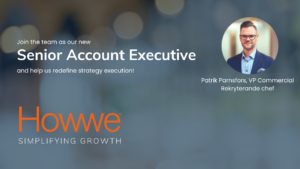ICA, a large grocery company, is facing many exciting opportunities and challenges. To be able to adapt to rapid changes in the market and create flexibility, ICA has introduced business agile working methods in several parts of the company. This interview will cover their approach to working agile, how they apply it and how they became business agile.
We met with Liv Forhaug in 2019 when she held the title of Chief Strategy Officer at ICA Gruppen to get her perspective on business agility. Read about the exciting journey she’s led at ICA Gruppen.
Interview with Liv Forhaug about ICA’s road to becoming business agile
Chief Strategy Officer for 6 years, previously at McKinsey for 16 years. Liv is part of the management group and is responsible for Group Strategy, M&A (Merger & Acquisition), cross-company initiatives, and digital innovation.
The agile way and being business agile — What is your view on this?
Agile ways of working create the flexibility and proactivity needed today, but it cannot be too vague or difficult to measure. We have to know that goals will be achieved and that our investments deliver. It can sometimes be misunderstood and interpreted as if time, steering, and measuring are not important when you work business agile, but that is not the case.
Agile ways of working are excellent for strategy work — when they are used correctly. It means less risk since you never get to that spectacular collapse. Today you don’t wait three years to deliver a project because it is split into many smaller parts. We actually have better control of the situation than before. It is my opinion that the need for control increases when you let go of it.
How do you business work agile?
When I started six years ago it looked like it usually did at that time. There was a water-tight division between IT and business — a project went on for too long before you understood that it was going to crash. There were so many involved in the process that it started resembling a Chinese whisper game and there were so many misunderstandings along the way.
There were large risks because development projects or strategic efforts dragged on for too long before it was discovered that it was not going as planned — or might not even be relevant anymore. We don’t work like that today. There is no “we” and “them”, we all work closely together.
What are management’s thoughts on working business agile?
Management is up on technology today and we talk about technology-linked business development. Management is not sitting around waiting; we are up on the internal dialogue and we have very strong business intelligence. This way, the thinking process itself is business agile. We are proactive.
This entails allowing time for employees to focus on strategy, to get as many as possible involved who can identify new challenges from unexpected directions. COOP or Willys are probably not our big competitors, it is probably a completely new kind of player in the market who challenges us in ways we cannot even imagine right now.
From insight to decision—what does this look like to you? Could you describe the process for you and for management?
As I see it, there are different kinds of decisions. There are binary decisions —should we buy Apotek Hjärta or not? That is a strategic decision, but it has a clear yes or no answer. Then there are other strategic processes where we have longer time plans, maybe over three years, but where we leave room for movement and change.
We have to adapt to the outside world and the market. There has to be a constant openness to new initiatives and other priorities. A lot can happen in just one year. You should never paralyze the organization.
How do you steer and measure your efforts?
Ahead of any large, focused initiative, we create a business case, an investment foundation. Sometimes these are clear-cut investments that we know how to profit from, while other efforts are not as defined and measurable. With the business agile way of working we minimize risk since we can steer and follow up a lot faster, in order to see whether the planned progress is made. In hindsight, it is hard to know what drives the right KPI. Loyalty, for example.
How do you know exactly what drives it when there are so many factors involved? Growth is much easier. We simply do our best. Sometimes you have to believe in something, even if it is not stringent. All follow-ups are not 100% accurate, but much more so than if you cannot compare to any historical data at all. The value of digitizing is huge but it is not just a question of collecting data, you also need to interpret and use it.
[/et_pb_text][et_pb_text _builder_version=”4.9.1″ _module_preset=”default” global_colors_info=”{}”]Advice for a quicker success for management!
- Be flexible in your daily work and make sure you can free up time for what is “most important”. Learn to distinguish between issues that require a quick process and those which are allowed to take longer. Look over the decision hurdles — are all of them necessary?
- Prioritize! It is tough, but a must. Also, dare to deprioritize when something new is added.
- The top management has to have knowledge about what is happening in the world. They cannot see IT as a separate issue. Those days are over. In the beginning, we had problems with IT not wanting to approve new and needed software, despite the fact that the business agile way of working demanded that we use them in order to succeed with the business case and to be able to steer and measure.
- Allocate time for the future! Innovation, inspiration, and ideas need reflection.
- Open up and UNDERSTAND the change. Dedicate time to the discussion: what does this mean for us? How will this affect our industry and our company?
What are you waiting for?
Howwe is the Solution for Growth.
With our method and software, we simplify the execution of your strategy.




